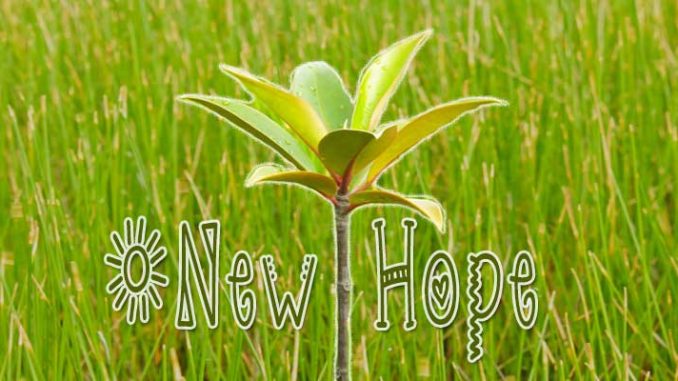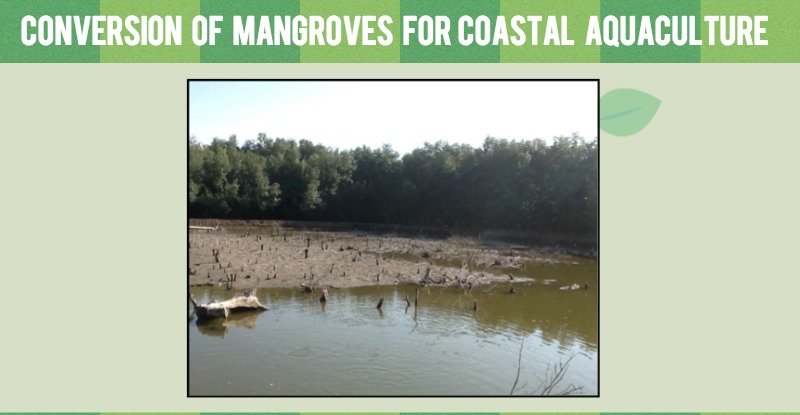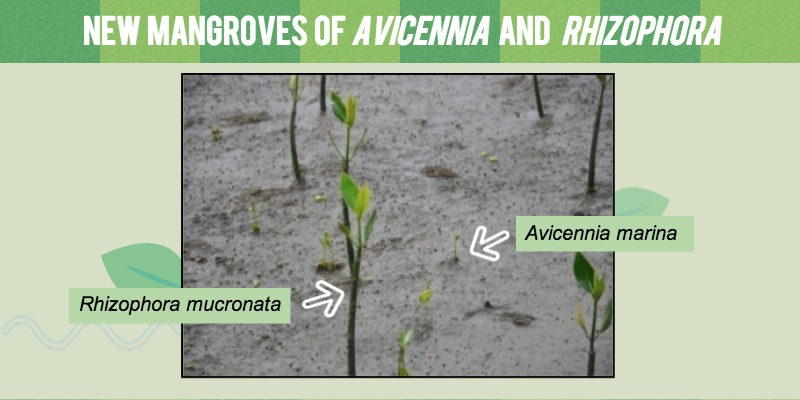
The Richest Ecosystems at the Equator are Under Pressure ~
Mangroves are plant formations that shelter coastal areas in tropical and sub-tropical nations and are the richest ecosystems at the equator due to their habitat as ecoton between the marine and terrestrial environments (Macintosh, 1996). For centuries, mangroves and their ecosystems have significantly contributed to the socio-economic development of coastal communities by providing a great number of tangible and intangible benefits. The tangible benefits consist of timber for firewood and construction, as well as non-timber products from the fisheries sector, such as highly-valued fish, crustaceans and mollusks (Soegiarto, 2000). On the intangible side, benefits include coastal protection against wave and current abrasions, shelter and habitat for wildlife, carbon reserves, sediment entrapment, recreation, and, education and ecotourism (Ellison 2000; Kathiresan and Bingham 2001; Amri 2009). Mangroves also significantly reduce the number of potential victims and damage from natural disasters and have demonstrated considerable resilience in their patterns of recovery following storms, hurricanes and tsunami (Alongi, 2008).In the last four decades, due to their amenity value in providing resources and services, mangroves and their ecosystems have been massively devastated (Primavera, 2005). The deterioration of mangroves and the changes in coastal environments have been noted as one of the most important environmental issues in tropical and sub-tropical regions globally. Population dynamics and the market economy have boosted the expansion of human settlements, agricultural lands, development of coastal industries, and more recently, expansion of intensive shrimp farming systems which together have caused widespread damage of mangroves and ecosystems (Figure 1).

Local People as Day-to-Day Managers of Mangrove Plantations
Local people are acknowledged as key in the sustainability of mangrove plantation programs and upkeep initiatives and they play significant roles in all stages and processes of development programs (O`Faircheallaigh, 2010). Without their contribution, mangrove plantation programs and initiatives might no longer be sustained. Solid long-term participation is crucial if the future of mangrove plantations and today’s coastal rehabilitation is to be assured.
Government and NGO/NPO institutions, universities and agencies, as well as local people, are all mindful of mangrove disturbances and have undertaken action that has set into place initiatives to restore mangrove resources and rehabilitate coastal environments. Planting mangroves is important, but maintaining and managing the mangroves in the most suitable and sustainable ways is by far the more urgent and arduous task. In many cases, actors involved in mangrove conservation measure success by counting how many mangrove seedlings they plant and hectares cultivated. Yet these figures tell only half the story. Long-term success needs to be measured after six months, one year, five years, and 10 years down the road. Success should also be gauged by the number of people that are still involved in plantation and maintenance works at those later stages.

The simple flowchart (Figure 2) indicates the interlinkages between mangrove maintenance and community involvement based on lessons and insights from community-based mangrove conservation and management in Tongke Tongke and Pangasa in Sinjai District of South Sulawesi Province, Indonesia (Amri, 2005a). Mangroves require long-term maintenance, 10—15 years, until the benefits, which include mangroves, lands and fishponds might be properly utilized. Yet the mangrove conservation programs and initiatives that are promoted and implemented by governmental institutions are short term, mainly 2—5 years, due to budgetary and human resource restraints. With governmental programs and initiatives ending after their designated period, it is essential that local people take on the role as day-to-day managers of mangroves so that plantation programs and initiatives are sustained (Pomeroy et al., 1997).
[pullquote]Planting mangroves is important, but maintaining the mangroves is by far the more urgent and arduous task.[/pullquote]Community participation is generally promoted so as to involve local people in many developmental schemes and environmental conservation programs and is recognized as a key element of a co-management strategy (Olsem, 2003). This study reveals that the involvement of local people and institutions is also critical when programs on coastal environmental conservation and natural resource management, particularly in mangrove conservation and management programs, are implemented. An important lesson to take into account is local people’s expectations for economic benefits, both in the short and long term. Given this, successful sharing of responsibility and/or co-management arrangements with local communities becomes more valued (Glucker et al., 2013). Local people are motivated by an economic orientation rather than mangrove conservation and coastal environmental rehabilitation per se. These economic expectations break down into the short and long term. In the short term, wages, plantation costs and other subsidies are the main factors, while in long term, property rights and ownership of planted mangroves, and newly established lands and fishponds come into play (Amri, 2005b). These clear benefits for local communities could lead the people to self mobilize in mangrove conservation and rehabilitation programs.Restoring the Mangroves for the Betterment of Society and the Future Earth
Today the United Nations estimates that the earth’s population has reached over seven billion, the five major populated countries are China, India, USA, Indonesia and Brazil. The UN Atlas notes that about 44% of the earth’s population inhabit coastal areas throughout the globe. This indicates that without adaptable and sustainable management systems, the coastal resources and ecosystems including mangroves continuously will be pressured by the rapid economic development to support people’s livelihoods into the future. New plantations of mangroves are needed to combat these challenges and these should be promoted and implemented by both governmental programs and community initiatives. The restoration of mangroves would be for the betterment of society, and ultimately the future earth. New plantation of mangroves will create new hope to address global challenges.

The picture (Figure 3) indicates a new plantation of Avicennia marina and Rhizophora mucronata in Bontobahari village, Maros District of South Sulawesi Province, Indonesia. Future new mangrove plantations will be expanded continuously as part of a large-scale plan for conserving mangroves and rehabilitating coastal environments. Local experience and the knowledge gained from propagating Avicennia and Rhizophora should be disseminated in the region to assuage future environmental challenges. Mindfully managed, mangroves can offer protection from damage to coastal environments from natural disasters such as storms, hurricanes and tsunami, as was demonstrated in southern Thailand’s Ranong Province when it was hit by the 2004 Indian Ocean Tsunami. By restoring the tangible and intangible benefits of mangroves, local societies would survive and sustain their livelihoods when met with future challenges and this would offer hope for future generations and the earth.
Andi Amri
Faculty of Marine Sciences and Fisheries, Hasanuddin University
Kyoto Review of Southeast Asia (issue 15), Young Academics Voice, July 2014
